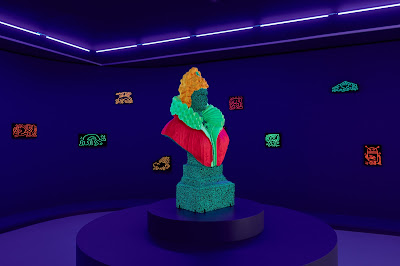On this trip I was hosted by Tourism Tasmania and MONA FOMA.
I've visited Tasmania many times over the years - eight times, in fact - and yet I'd never travelled to or from the island state by sea rather than air.
It was time to fix that.
On the outward leg of my latest visit, to Launceston for the MONA FOMA arts festival, I flew. It's a quick flight from Melbourne, just 45 minutes in the air, but subject to all the usual hassles of reaching the airport, being tested for explosives for the 4,357th time at security, and being squeezed into cattle-truck conditions on the plane itself.
On the way back, however, I was boarding this entirely different vessel -
Spirit of Tasmania I, one of a duo of big car ferries that sail between Devonport, Tasmania and Melbourne, Victoria each night:
Entering via the rear loading area of the ship, foot passengers head up escalators to Deck 7:
As you can see from the sign, this is the social hub of the vessel, with most of the dining and entertainment options, though there additional bars and kids' areas on Decks 9 and 10. On Deck 7 there's a reading room (oddly without books), a bar, two cinema screens, a gaming lounge, tourist info, a shop with souvenirs and sandwiches, and a restaurant which serves a fairly unexciting buffet meal:
Heading upward via the blue lift (there are also colour-coded stairwells to aid orientation), I walked all the way toward the bow to find my cabin:
Most of the sleeping accommodation is on Deck 8. There's a variety of options, including reclining chairs, berths in shared cabins along the lines of a hostel dorm, and private cabins for two to four people. A lot of family groups use the
Spirit, taking their cars with them, so these multi-person cabins are popular.
(As an aside, a couple of interstate travellers I met in Launceston pointed out another advantage of travelling to Tasmania with your own car - you can load it up with great Tassie food and cases of local wine! Try doing that on a Boeing 737.)
I, however, had scored the poshest option, a Deluxe Cabin. Located right at the front of Deck 8, on the starboard corner, it was basically a hotel room with queen-size bed, chairs, TV, bar fridge and bathroom. Very comfortable indeed:
After dropping my backpack in my cabin I strolled around the ship, stepping out to have a look at Bass Strait after we left Tasmania:
After dinner I turned in and had a reasonably good sleep. Bass Strait is notorious for its unpredictably rough waters, but luckily this was a calm night. Once or twice I was woken by a loud clanging noise, which I suspect was a high wave breaking against the bow, but otherwise it was peaceful, though always with a slight sense of swaying movement.
The only problem about the crossing is the ungodly hour it arrives at Port Melbourne: 6am. I set my alarm for 5am so I could have a shower and repack my backpack. Then I headed up to Deck 10 to avail myself of the services of the barista at work there, then took my coffee outside Deck 8 to see the view:
Utterly beautiful. And with the terminus of the number 109 tram just 400 metres away, I was soon offboard and on my way home to Melbourne's city centre. A great experience, with vastly more comfort and character than an equivalent flight.
For more information and to make bookings, visit the Spirit of Tasmania website.















































